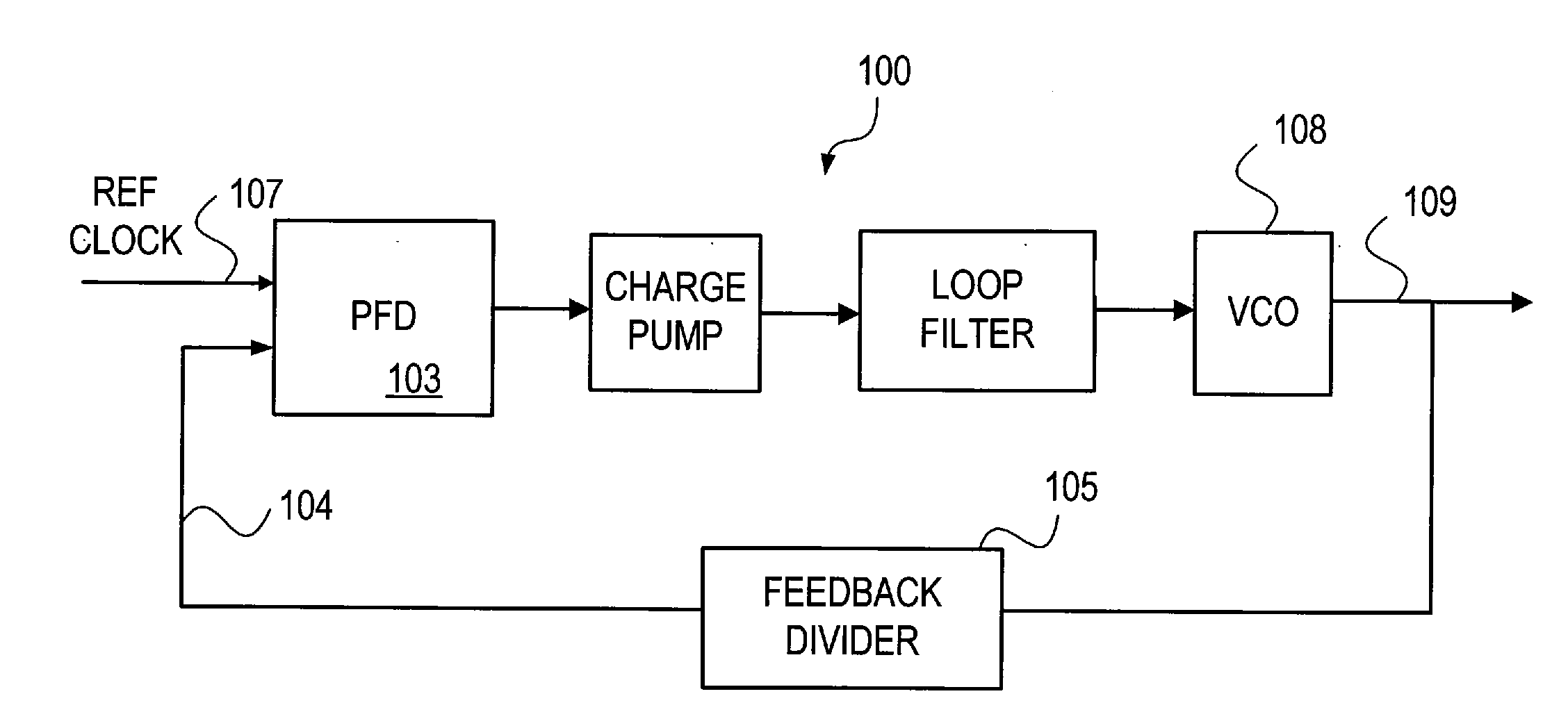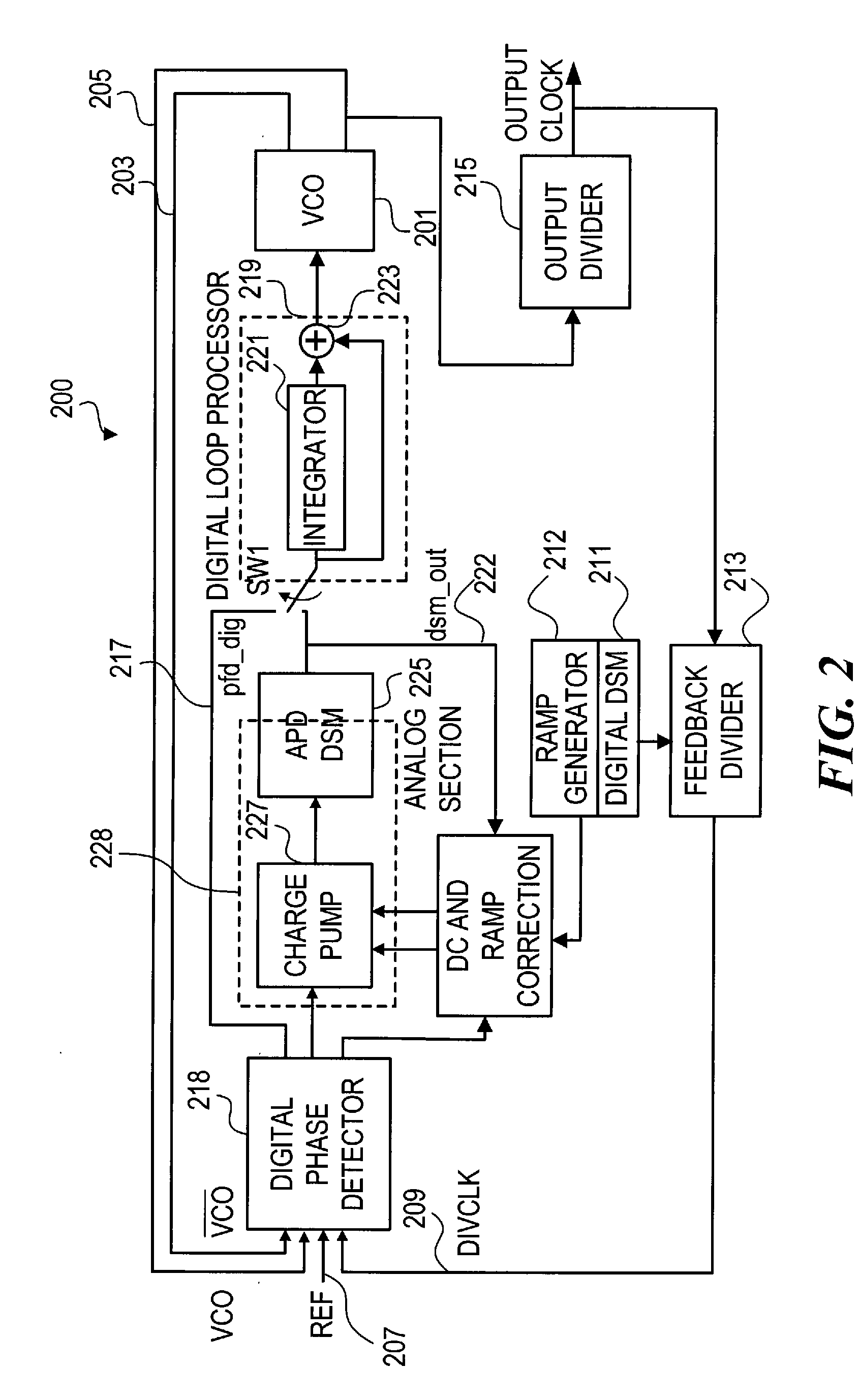Dividerless pll architecture
- Summary
- Abstract
- Description
- Claims
- Application Information
AI Technical Summary
Benefits of technology
Problems solved by technology
Method used
Image
Examples
Embodiment Construction
)
[0030]Referring to FIG. 2, illustrated is an exemplary PLL 200 according to an embodiment of the invention. The VCO 201 is assumed to yield both phases 203 and 205 of the VCO clock. These are sent to the front end for processing with the reference clock (REF clock) 207 and the output (DIVCLK) 209 of the feedback divider 213. There are two main modes of operation of PLL 200. The first is purely digital, while the PLL 200 locks to the REF clock 207. In this mode the digital delta sigma modulator (DSM) 211 generates a control signal to the Feedback Divider 213 that provides the DIVCLK 209 signal corresponding to the standard fractional-N approach, although operating on a coarse clock, i.e., lower frequency than the VCO, from the output of the Output Divider 215. A binary phase detector output (pfd_dig) 217 from the digital phase detector 218, provides a signal which drives the digital loop processor 219, which provides a loop filter function, comprising an integrator 221 and summer 22...
PUM
 Login to View More
Login to View More Abstract
Description
Claims
Application Information
 Login to View More
Login to View More - R&D
- Intellectual Property
- Life Sciences
- Materials
- Tech Scout
- Unparalleled Data Quality
- Higher Quality Content
- 60% Fewer Hallucinations
Browse by: Latest US Patents, China's latest patents, Technical Efficacy Thesaurus, Application Domain, Technology Topic, Popular Technical Reports.
© 2025 PatSnap. All rights reserved.Legal|Privacy policy|Modern Slavery Act Transparency Statement|Sitemap|About US| Contact US: help@patsnap.com



